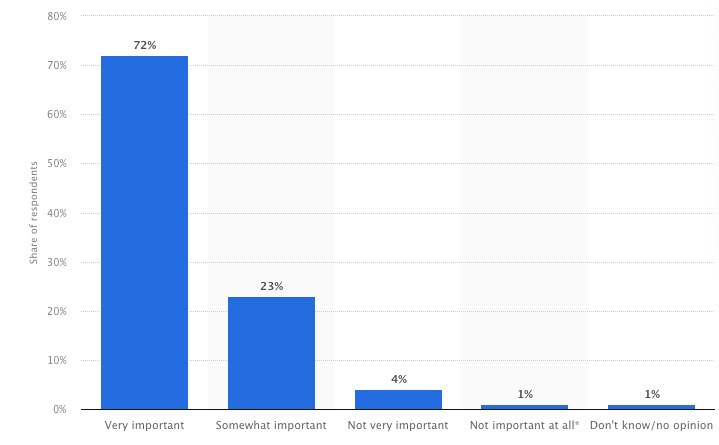Work-life balance has become one of the most prominent topics at work. Especially in an age where we have access to technology that connects us with our jobs around the clock, it’s harder than ever before to really shut off. In order to achieve a better work-life balance, you need to actively focus on setting clear boundaries between your home life and your life at work.
Only around 23% of employees believe they promote a stable work-life balance, with the vast majority tending to overwork their employees. Not only does this lead to more stress in the workplace, but it also leads to major burnout. According to the Harvard Business Review, around $190 billion is spent each year on the psychological impacts of burnout in the workplace.
To protect your own mental and physical health, you need to make sure that you prioritize time off, actually relaxing when you disconnect from work. In this article, we’ll dive into the world of achieving a better work-life balance, demonstrating exactly how you can make effective choices to stabilize your current work-life habits.
Let’s dive right in.
Assessing your current work-life balance
In order to achieve a better work-life balance, you need to first assess exactly where you stand in this regard. Most of the time, you won’t have to conduct any experiments or deep investigations to find out if you’re currently giving yourself enough free time. As you’re living through your day, you’ll know how much time you roughly spend working and how much time you’re completely disconnected from work.
If you break up your day into chunks of three, each of 8 hours, you should have a clearer idea of where your time is going. Most workplaces ask their employees to be at work for eight hours each day. If you’re sleeping for eight and at work for eight, you’ve got one chunk left for free time. However, for most people, this simply isn’t the case.
Around 13% of people work over 50 hours each week, already skewing the figures. What’s more, if you spend time commuting in and out of work, your eight-hour chunk of free time can quickly turn into four or five. When factoring in other aspects, like preparing dinner or doing chores, you’ll quickly discover how little free time you really have.
Spend a week meticulously jotting down when you clock in and out of work. Beyond that, trace when you’re actually resting, completely disconnected from work. If you discover that the amount of free time you have – unimpacted by late-night work messages – isn’t as high as you think, it’s time to make a change.
If you’re not already feeling burnt out, a lack of free time can quickly become the perfect recipe for a difficult period in your life.
How to improve your work-life balance
The very first step to achieving a better work-life balance is to make sure that you are taking on the correct amount of work. If you find yourself staying late into the night working on projects, it’s likely that you simply have too much to do. Reaching out to a manager will help you overcome this, as they should be able to delegate some of your work to other members of the team.
Don’t be afraid to ask for help – if people don’t know you’re struggling, they won’t be able to make changes to alleviate some of your stress. Beyond that, here are some effective tips to improve your work-life balance:
- Disconnect – Be sure to delete or silence all work-related applications from your phone. One small workplace message, and you may find yourself jumping back into work, even when you’re at home.
- Prioritize You – Above all else, you should be your priority. Don’t stress yourself or strain your mind by taking on extra work. As sad as it is, your company could replace you with ease if you ever quit. If they’re so willing to replace you, why are you destroying your own mental health to please a corporate machine that won’t reward you?
- Say No – If you have too much work, or just enough, don’t take on more projects. Get used to saying no and backing up why you cannot take even more onto your plate.
Once you embed these habits in your working life, you’ll be much more prepared to boost your work-life balance and create strong working relationships without burning yourself out.
How to foster a flexible workplace culture to improve work-life balance
While there are a number of ways you can improve your own work-life balance, sometimes it will simply be out of your hands. That’s why it’s important to work for a company that prioritizes strict boundaries between work time and free time.
For managers, there are a number of ways that you can improve work-life balance in your teams:
- Provide flexible office workspaces or office pods to facilitate better working conditions
- Move to a remote or hybrid approach
- Prioritize employee well-being and ask about current worker stress levels
While you can do a lot to improve your own mental well-being and improve your work-life balance, a little help from your manager can also go a long way.
Final Thoughts
In 2023, you can’t go 15 minutes without hearing about work-life balance. While it’s certainly a trending topic, it’s also become so popular because it can bear intense consequences on employee mental well-being. At present, over 70% of employees actively look for signs of a good work-life balance when selecting a new job.
If you’re unable to move to a company that offers better working conditions, there is still something you can do. By making use of the tips and strategies that we’ve outlined in this article, you’ll be in a much better position to reclaim your free time and set clear boundaries with your workplace.
Trust us, you’ll rapidly find out just how beneficial a little mental time away can be for your well-being.


